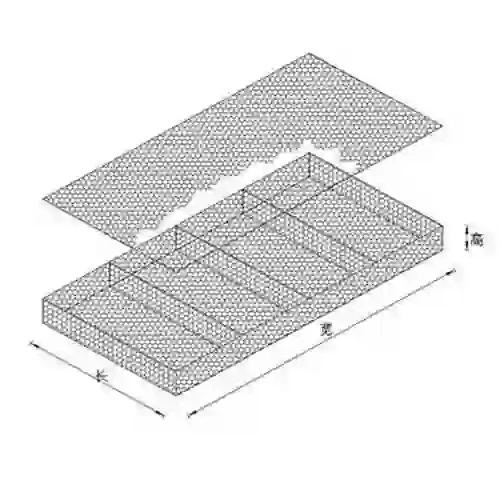-
 Phone:
Phone: -
 Email:
Email:

pvc stay wire
Understanding PVC Stay Wire Applications and Benefits
PVC stay wire, often referred to in the construction and engineering sectors, has garnered attention for its versatility and effectiveness in various applications. With the growing need for durable and long-lasting materials in infrastructure development, understanding the properties and benefits of PVC stay wire is essential.
What is PVC Stay Wire?
PVC stay wire is essentially a wire coated with polyvinyl chloride (PVC), a synthetic plastic polymer. The wire is typically made from steel, which provides the necessary strength and durability required for a variety of applications. The PVC coating enhances the wire's resistance to corrosion, weather elements, and wear, making it suitable for outdoor use.
Applications of PVC Stay Wire
The applications of PVC stay wire are vast, spanning across numerous industries
. Here are some of the primary uses1. Construction In construction, PVC stay wire is often used in tensioning systems for bridges, towers, and various structural frameworks. It provides essential support and stability, ensuring the integrity of the structures.
2. Telecommunication Utility companies use PVC stay wire to secure communication lines, such as telephone and cable lines. The wire’s resilience against environmental factors ensures consistent service and reduces the risk of outages.
3. Agriculture Farmers utilize PVC stay wire for fencing and supporting plant growth. The wire is effective in creating trellises for climbing plants and protecting crops from animals, providing an essential barrier in agricultural settings.
4. Decoration and Landscaping The aesthetic appeal of PVC stay wire has made it popular in landscaping and gardening. It can be used to create decorative fences, garden borders, and supports for decorative plants, combining functionality with visual appeal.
pvc stay wire

5. Electrical Utilities PVC stay wire is employed in the electrical industry for the installation of overhead power lines. Its strength and weather resistance ensure that the wires remain secure, minimizing the risk of disruptions caused by environmental conditions.
Benefits of PVC Stay Wire
The benefits of using PVC stay wire over traditional materials are compelling
1. Durability One of the most significant advantages of PVC stay wire is its longevity. The PVC coating protects the wire from rust and corrosion, extending its lifespan significantly compared to uncoated steel wires.
2. Flexibility PVC stay wire is available in various diameters and can be easily manipulated to suit specific needs. This flexibility ensures that it can be used in a wide range of applications without compromising on strength.
3. Cost-Effectiveness While the initial investment in PVC stay wire may be slightly higher than traditional wire, the long-term savings associated with its durability and low maintenance requirements make it a cost-effective choice over time.
4. Safety The insulated nature of PVC stay wire makes it safer to handle. Users do not have to worry as much about sharp edges or the risk of electrical conduction, making it easier to work with in various applications.
5. Low Maintenance The need for regular maintenance is considerably reduced with PVC stay wire due to its resistance to environmental degradation. This feature is particularly beneficial for large projects where maintenance costs can quickly add up.
Conclusion
In conclusion, PVC stay wire is an invaluable material that enhances construction, agriculture, telecommunications, and many other industries. Its unique properties of durability, flexibility, cost-effectiveness, safety, and low maintenance make it a preferred choice for professionals and DIY enthusiasts alike. As industries continue to seek ways to improve efficiency and reduce costs, the importance of materials like PVC stay wire will undoubtedly grow, reinforcing its role as a vital component in modern infrastructure development. Whether for structural support, agricultural needs, or aesthetic applications, PVC stay wire stands out as a reliable solution that meets a wide array of demands.
-
Wire Mesh for Every Need: A Practical SolutionNewsJul.25,2025
-
Steel Fences: Durable, Secure, and Stylish OptionsNewsJul.25,2025
-
Roll Top Fencing: A Smart Solution for Safety and SecurityNewsJul.25,2025
-
Cattle Farm Fencing Solutions for Maximum SecurityNewsJul.25,2025
-
Affordable Iron Binding Wire SolutionsNewsJul.25,2025
-
Affordable Galvanized Wire SolutionsNewsJul.25,2025
-
Wire Hanger Recycling IdeasNewsJul.25,2025








